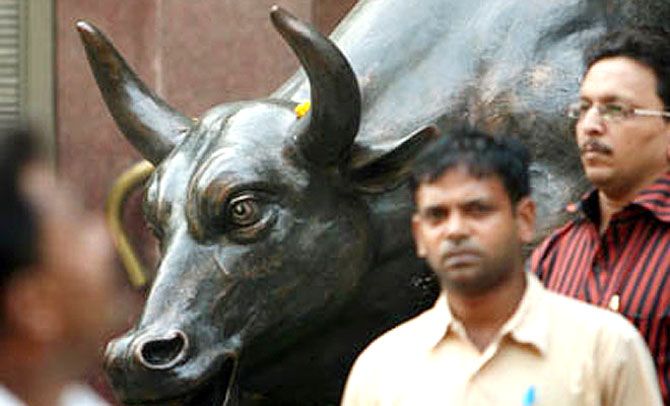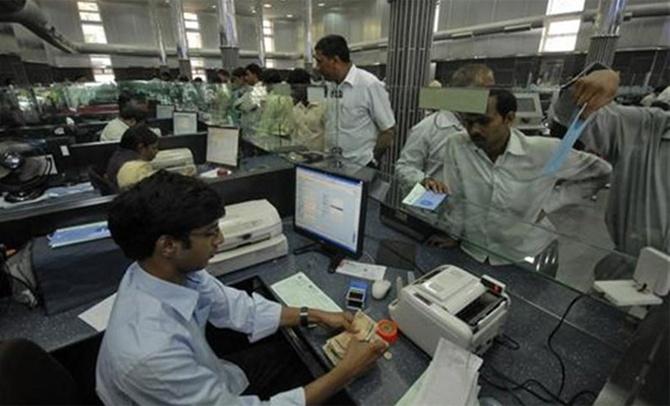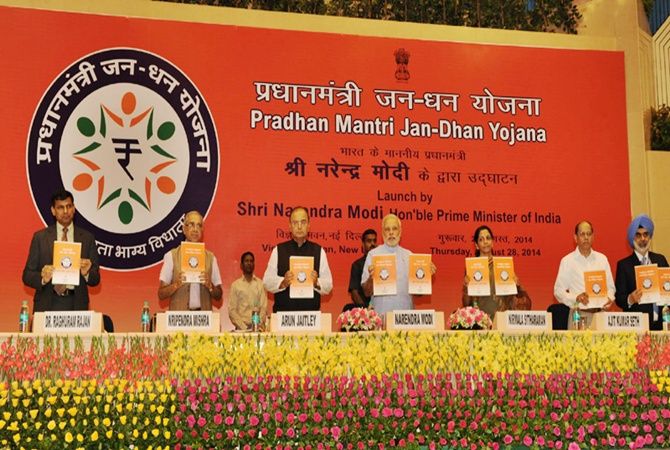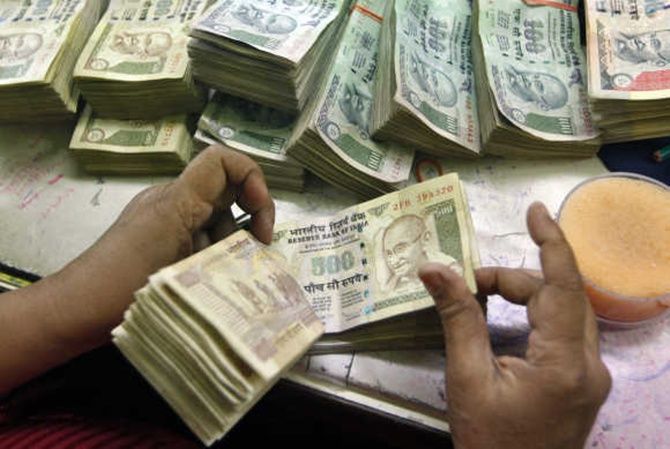
Many things could play spoilsport for the Indian economy, says Abheek Barua.
This is the time of the year when analysts get busy tweaking their forecasts for things like growth, company earnings and inflation.
The other part of the ritual is to put together a list of risks that could derail both the economy and markets.
I must confess that while my list of global risks is rather long, I find myself looking at a strong case for India overcoming many of them.
That said, things have a habit of taking an unexpected turn just when you think the road is straight and narrow. So here’s my list of risks for the year.
I understand that there is some fairly wild cheering about the sharp decline in global commodity prices and the comfort this is likely to bring to commodity importers like India.

That might well be true, but unfortunately I cannot help but recall the “investment clock” that Merrill Lynch used to publish in some of their strategy reports.
The minute hand of the clock used to show how a sell-off in one asset class spilled over to the next asset class; and, as the hand journeyed through the full circle, market after another tumbled.
Then around the six o’clock mark a sequential recovery set in, ending in a full-blown rally across markets at the end of the 360-degree movement.
If I were to go by this logic, I would ask the question: which asset class or bunch of markets will be hit after commodities?
Could it by any chance be emerging markets that bear the brunt of a hike in United States policy rates that seems inevitable next year? If they do, can India escape the contagion altogether?
The second risk relates to whether the domestic financial system is capable of delivering the kind of funding that is needed to support a recovery in growth.

There have been a couple of brilliant commentaries on the fragility of the banking system (Ruchir Sharma’s piece in The Times of India a couple of weeks ago comes to mind) with more than 10 per cent of its assets in the “dodgy” category, showing up on banks’ books either as non-performing loans or restructured assets.
This is particularly true of the public sector banks. (Their gross non-performing assets incidentally crossed five per cent of their loan book in September.)
I agree with the view that if the economy has indeed bottomed out, a further decline in asset quality might not be on the cards.
But the extant load of bad assets along with the stringent demands of Basel-III norms (the Reserve Bank of India, or RBI, is actually more stringent than Basel-III on a couple of counts) translate into huge capital needs for the banking system. I wonder where all this capital will come from?
Public funds are unlikely to do the trick as that would have adverse consequences for the fiscal deficit. The obvious solution lies in major stake sales in the public sector banks, with the attendant risk of an oversupply of paper that could take the market down.

The third thing I tend to fret about is the impact of financial inclusion on rural spending. Let me be very clear. I think access to the financial network is imperative both from the perspective of reducing poverty and of moving to “cash-transfer regime” for subsidies.
But successful “inclusion” is also about providing credit to the needy and deprived. The Jan Dhan Yojana makes a beginning by promising overdraft facilities to account holders. Access to credit is likely to bring precautionary savings down and could boost consumption.
The pressure of this consumption demand will fall, I suspect, on “better” food, like proteins and fruit and vegetables, as well as services like healthcare where massive supply shortages already exist.
Can we do enough to remove these shortages on time, or will we stare at yet another spiral in food and other prices as this demand picks up?
I also wonder if the renewed emphasis on “manufacturing” (that is much welcome by the way) also has latent inflationary potential through the wage route. Remember that roughly about 4.5 per cent of our workforce has some form of formal and informal vocational training.
It is possible that if manufacturing ramps up, the demand for skill and “trainability” could spike wages up for blue-collar workers. I recall there was a similar wage spiral for white-collar workers when the economy picked up in 2004.

Besides, there has to be some clarity on the valuation of the rupee. Some of us have pointed out that, based on the Consumer Price Index (CPI), the real effective exchange rate (REER) shows a significant degree of overvaluation.
The counter to this is that when the CPI rather than the Wholesale Price Index is used to calculate the REER, adjustments need to be made for relative productivity gains. This is not the easiest thing to do.
My current work with Jaimini Bhagwati and Suheb Khan at the ICRIER on exchange rates shows that the rupee could be seen to be fairly valued or overvalued depending on which metric of productivity one chooses.
If indeed the currency is overvalued, it could hurt our exports. If the overvaluation is allowed to build up, it could ultimately result in a one–off deep correction that, going by history, will be accompanied by severe volatility.
Let me end with what I think is the biggest risk of all. If the government’s revenue numbers are any indication, growth is yet to pick up and we could end up with a large shortfall in revenue collections at the end of the fiscal year.

The government has, for its own reasons, chosen not to divest in the market rally. If market conditions change, meeting divestment targets, too, could be a challenge. Thus, the only option would be to compress expenditures that could hurt both consumption and investments.
The private sector has enough spare capacity and is not ready to invest immediately. Thus, the burden falls on sectors like the railways or oil and gas that technically constitute public investments, but are not funded by the Budget.
Whether this will be enough to drive a pick-up in investments that is robust enough to pull the entire economy up with it remains an open question. Does someone have a quick answer?
The writer is with the ICRIER. These views are his own.











